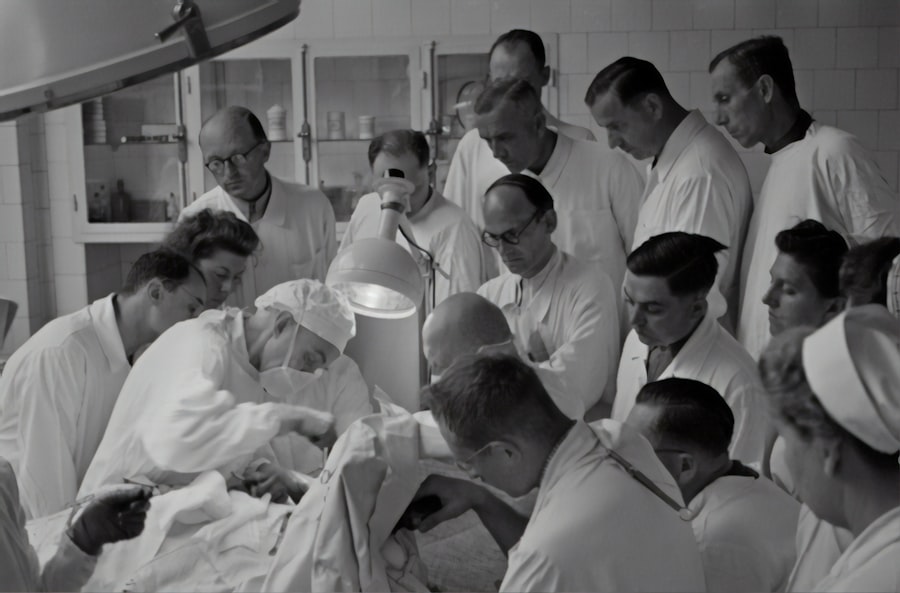AI-powered diagnostic tools have transformed medicine by enhancing diagnostic accuracy and efficiency. These tools utilize machine learning algorithms to analyze medical imaging such as X-rays, MRIs, and CT scans, identifying abnormalities and supporting healthcare professionals in making more informed decisions. By processing vast datasets, AI can detect patterns and anomalies that may be less obvious to human observers, facilitating earlier disease detection and improving patient outcomes.
AI diagnostic tools also help alleviate strain on healthcare systems by streamlining the diagnostic process and enabling faster, more accurate diagnoses. Moreover, AI-powered diagnostic tools have the potential to address healthcare access disparities by providing diagnostic support in areas with limited access to specialized medical professionals. This technology is particularly valuable in rural or underserved communities where healthcare resources may be scarce.
By empowering healthcare providers to deliver more accurate and timely diagnoses, AI-powered diagnostic tools can help reduce healthcare disparities and enhance overall patient care. In summary, AI-powered diagnostic tools have the capacity to significantly improve medical diagnostic efficiency and accuracy, leading to better patient outcomes and a more equitable healthcare system.
Key Takeaways
- AI-powered diagnostic tools can help healthcare professionals to accurately and efficiently diagnose diseases and conditions.
- Robotic surgery and automation can improve surgical precision and reduce the risk of human error during procedures.
- Predictive analytics for patient care can help healthcare providers to anticipate and prevent potential health issues for their patients.
- Virtual health assistants and chatbots can provide patients with 24/7 access to healthcare information and support.
- Automated administrative tasks can streamline healthcare operations and free up time for healthcare professionals to focus on patient care.
- Drug discovery and development can be accelerated and improved through the use of AI and machine learning technologies.
- Remote monitoring and telemedicine can enable healthcare providers to monitor and treat patients from a distance, improving access to care for remote or underserved populations.
Robotic Surgery and Automation
Enhanced Visualization and Precision
These advanced systems utilize robotics and imaging technology to provide surgeons with a 3D view of the surgical site, allowing for precise, real-time movements during procedures.
Reducing Human Error and Expanding Access
Automation in surgery, including robotic arms and instruments, can help reduce the risk of human error and improve the overall safety of surgical interventions. Furthermore, robotic surgery and automation have the potential to expand access to surgical care by enabling remote surgery and telesurgery. This technology can bridge the gap in access to specialized surgical care, allowing experienced surgeons to perform procedures on patients located in remote or underserved areas.
Improving Patient Outcomes and Reducing Disparities
By leveraging robotic surgery and automation, healthcare providers can deliver high-quality surgical interventions to a broader patient population, ultimately improving patient outcomes and reducing disparities in surgical care.
Predictive Analytics for Patient Care

Predictive analytics has emerged as a powerful tool in healthcare for forecasting patient outcomes, identifying at-risk populations, and optimizing treatment plans. By analyzing large datasets of patient information, including medical history, genetic data, and lifestyle factors, predictive analytics can help healthcare providers anticipate potential health issues and intervene proactively. This technology enables healthcare professionals to identify patterns and trends that may indicate a higher risk of developing certain conditions, allowing for early intervention and personalized care plans.
Additionally, predictive analytics can help optimize resource allocation within healthcare systems by identifying high-risk patients who may require additional support or monitoring. Furthermore, predictive analytics has the potential to improve population health management by identifying trends and risk factors at a broader level. By analyzing population-level data, healthcare organizations can develop targeted interventions and public health initiatives to address prevalent health issues and reduce the burden of chronic diseases.
Overall, predictive analytics has the potential to revolutionize patient care by enabling proactive interventions, personalized treatment plans, and improved population health management.
Virtual Health Assistants and Chatbots
Virtual health assistants and chatbots have become increasingly prevalent in healthcare as tools for patient engagement, education, and support. These AI-powered virtual assistants can provide patients with personalized health information, answer medical questions, schedule appointments, and even assist with medication management. By leveraging natural language processing and machine learning algorithms, virtual health assistants can engage with patients in real-time, providing them with relevant information and support throughout their healthcare journey.
Additionally, virtual health assistants can help alleviate the burden on healthcare providers by addressing routine inquiries and administrative tasks, allowing for more efficient use of resources. Moreover, virtual health assistants have the potential to improve patient education and adherence to treatment plans by delivering personalized information and reminders. By engaging with patients in a conversational manner, virtual health assistants can help empower patients to take an active role in managing their health and wellness.
Furthermore, these tools can help bridge the gap in healthcare access by providing support to patients in remote or underserved areas. Overall, virtual health assistants and chatbots have the potential to enhance patient engagement, education, and support, ultimately leading to improved patient outcomes.
Automated Administrative Tasks
Automation has revolutionized administrative tasks in healthcare by streamlining processes, reducing errors, and improving efficiency. From appointment scheduling and billing to electronic health record management, automation has enabled healthcare organizations to optimize their administrative workflows and allocate resources more effectively. By leveraging AI-powered tools and robotic process automation, healthcare providers can automate repetitive tasks, such as data entry and documentation, allowing staff to focus on more complex and value-added activities.
Additionally, automation can help reduce the administrative burden on healthcare professionals, allowing them to spend more time on patient care and clinical activities. Furthermore, automated administrative tasks have the potential to improve the overall patient experience by reducing wait times, streamlining communication, and enhancing the efficiency of healthcare services. By automating processes such as appointment reminders and prescription refills, healthcare organizations can improve patient satisfaction and engagement.
Moreover, automation can help reduce costs and improve revenue cycle management by minimizing errors in billing and claims processing. Overall, automated administrative tasks have transformed healthcare operations by improving efficiency, reducing costs, and enhancing the overall patient experience.
Drug Discovery and Development

Streamlining the Drug Discovery Process
This technology enables pharmaceutical companies to streamline the drug discovery process, reduce costs, and bring new treatments to market more quickly. AI can help identify existing drugs that may be repurposed for new indications, leading to novel treatment options for various diseases.
Optimizing Clinical Trials
Moreover, AI has the potential to optimize clinical trials by identifying suitable patient populations, predicting treatment responses, and monitoring safety outcomes. By analyzing diverse datasets from electronic health records and clinical studies, AI can help design more efficient and targeted clinical trials, ultimately leading to faster approvals of new therapies.
Addressing Unmet Medical Needs
Furthermore, AI-powered drug discovery has the potential to address unmet medical needs by accelerating research into rare diseases and complex conditions. Overall, AI has revolutionized drug discovery and development by enabling more efficient research processes, identifying novel treatment options, and improving the overall success rate of clinical trials.
Remote Monitoring and Telemedicine
Remote monitoring and telemedicine have transformed the delivery of healthcare services by enabling virtual consultations, remote patient monitoring, and telehealth interventions. These technologies leverage connected devices and digital platforms to enable healthcare providers to monitor patients’ vital signs, symptoms, and adherence to treatment plans from a distance. By enabling real-time communication between patients and providers, remote monitoring and telemedicine can improve access to care for patients in remote or underserved areas.
Additionally, these technologies can help reduce the burden on healthcare systems by minimizing unnecessary hospital visits and readmissions. Furthermore, remote monitoring and telemedicine have become increasingly important in managing chronic conditions and providing ongoing care for patients with complex medical needs. By enabling continuous monitoring of patients’ health status outside of traditional clinical settings, these technologies can help identify early warning signs of deterioration and intervene proactively.
Moreover, remote monitoring can empower patients to take an active role in managing their health by providing them with real-time feedback and support. Overall, remote monitoring and telemedicine have revolutionized the delivery of healthcare services by improving access to care, empowering patients, and optimizing resource allocation within healthcare systems. In conclusion, AI-powered technologies have revolutionized various aspects of healthcare by improving efficiency, accuracy, access to care, patient engagement, and overall outcomes.
These technologies have the potential to address longstanding challenges in healthcare delivery while paving the way for a more equitable and patient-centered system. As AI continues to advance, its impact on healthcare is expected to grow exponentially, leading to further innovations in diagnosis, treatment, research, and delivery of care. Embracing these technologies will be crucial for healthcare organizations seeking to adapt to evolving patient needs while improving the overall quality of care.
One related article to AI Automation Examples in Healthcare: Innovations to Watch is a piece on DevOps AWS Cloud Docker Compose Deployment Testing. This article discusses the use of DevOps and AWS cloud services to streamline the deployment and testing process for software applications. It provides insights into how these technologies can be leveraged to improve efficiency and reliability in software development. You can read more about it here.
FAQs
What are some examples of AI automation in healthcare?
Some examples of AI automation in healthcare include robotic surgery, virtual health assistants, predictive analytics for patient outcomes, and personalized medicine.
How is AI automation improving healthcare?
AI automation is improving healthcare by increasing efficiency, reducing human error, enabling personalized treatment plans, and improving patient outcomes through predictive analytics.
What are some innovations to watch in AI automation in healthcare?
Some innovations to watch in AI automation in healthcare include AI-powered diagnostic tools, remote patient monitoring, drug discovery and development, and AI-driven operational improvements in healthcare facilities.
What are the potential benefits of AI automation in healthcare?
The potential benefits of AI automation in healthcare include improved accuracy in diagnosis and treatment, reduced healthcare costs, increased access to healthcare services, and enhanced patient experience.





